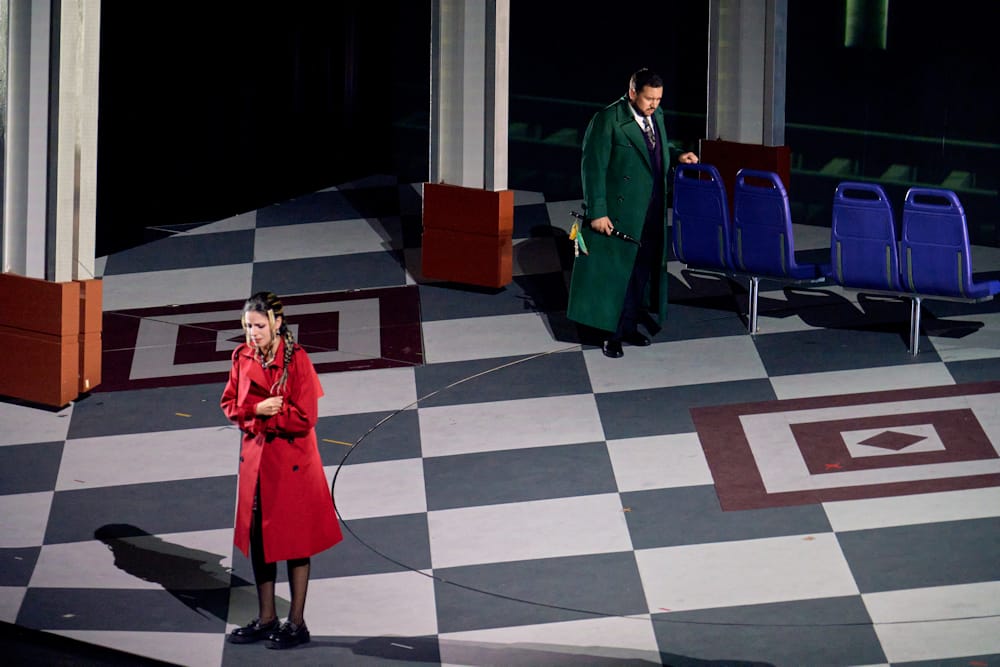The star in Opera Hong Kong’s new production of Wolfgang Amadeus Mozart’s singspiel “The Magic Flute” is the staging. That is not to take anything away from the singing: Mexican tenor Andrés Moreno Garcia as Tamino, Americans John Chest and Sofia Troncoso (Papageno and Pamina) all sang credibly. Local soprano Rachel Kwok was a sparky Papagena and the “three ladies” (Candice Chung, Ashley Chui and Carol Lin—done up as airline stewardesses, more of which later) more than held their own.
Although there is some scholarly debate about Die Zauberflöte’s origins in freemasonry, it was meant as popular entertainment and the story resembles nothing as much as a fairy tale. The modern opera-goer needs to deploy a certain amount of suspension of disbelief: listen to the music, absorb the spirit and perhaps not pay too much attention to details of the story.
But opera is visual as well as musical and dramatic. This new staging for a production that after debuting in Hong Kong will go on to tour in both Beijing and Australia—combined physical elements with still and animated projections for an integrated aesthetic. Characters came and went in subway (ie underground/metro) carriages, the main stage had seating from a railway station or perhaps airport waiting area (with industrial chairs, flooring and brutalist columns to match).
The physical staging, combined with (deliberately grainy) projected imagery and the costumes of people who were (Pagageno and Papagena aside) dressed in street clothes combined for an integrated retro aesthetic. Some hints were deliberate: the prim stewardesses (both in the flesh and as projected advertising poster) were very much of 1950s or 60s vintage. Indeed, the shape of columns, railway carriages, the flooring, the graininess of projections and muted colours of the projections gave rise to something that looking like it might have been late-Soviet era nostalgia. There were some futuristic elements, but from the perspective of a half-century ago.
One can of course question what this has to do with Die Zauberflöte and Mozart. But this is not Tosca. Mozart’s music stands apart from any staging, and Die Zauberflöte is a fairy tale ungrounded in any concrete spatial or temporal reality. This production is visually convincing and aesthetically atmospheric. That this thought-provoking multinational, multicultural, multimedia production debuted in Hong Kong is evidence of the role Hong Kong can play—and should be playing—in the performing arts.

